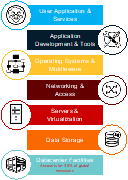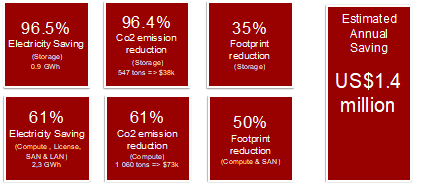Decarbing the Data Center is Good for Business, Planet


The latest report from the United Nations on the science of climate change speaks to the criticality of preventing the earth from warming more than 1.5°C and is a “dire warning about the consequences of inaction.”
In Climate Change 2022, from the U.N.’s Intergovernmental Panel on Climate Change’s (IPCC), the group calls on governments and businesses to act immediately to drastically reduce their carbon emissions within the decade. And with so many technical innovations, expertise, and best practices readily available, there is no excuse or rationale to not get started on such projects today.
Sustainability is already a megatrend in the IT sector and many organizations around the globe are training their efforts on the data center – an area rife with challenges and opportunities. Based on my countless interactions with customers, here are a few areas to consider when approaching decarbonizing the data center:
Laying out an IT strategy for businesses to navigate sustainability is a book-length conversation. It starts with application modernization of workloads to reduce operating system overhead and the infrastructure footprint. In some cases, app modernization alone can provide up to 50% saving of server capacity. The process also enables businesses to start breaking down data silos. When this occurs, they are able to extract and enhance data insights across the organization and automate daily tasks both of which can offer savings and agility in the organization.

Digital systems providers have a role to play in sustainability, as well. The information and communication sector is forecasted to account for up to 3.9% of global emissions in 2021. Consider that more than 80% of the value-chain CO2 emissions of a storage product are related to its use after it is sold. For this reason, to reduce emissions across the entire value chain from cradle to grave, is crucial to reducing CO2 emissions not just during production but also during the stage of use. Replacing the infrastructure with eco-friendly systems is more than worth considering.
Our Storage Virtualization Operating System (SVOS), for example, can help reduce the CO2 emissions with such innovations as enhanced data reduction technology, which lets customers store more user data on the purchased capacity. In some use cases a 65% reduction in electricity consumption will reduce CO2 emissions by 65%, as well. With storage virtualization we can apply these technologies to existing storage systems with the same reduction rate.
Another ability is the non-disruptive replacement of the storage controller to next generation systems without the need for data migration. Doing so enables organizations to avoid the time-consuming data migration project that requires old and new systems to run in parallel throughout the migration phase. Such processes consume a lot more power and require additional cooling and floorspace, as well, not to mention they can take months to complete.
For example, we conducted a data center assessment for a customer recently and showed that a storage NVMe flash configuration created 2.5 times more CO2 compared to an SSD with SAS interface solution. The point is, with the right insight and guidance, CO2 emissions can be driven down.
At Hitachi Vantara, we take a holistic approach to the challenge and attack carbon on multiple levels. From decarbonizing our offices and our factories, to developing new low-carbon infrastructure, we are walking the sustainability talk. In fact, between generations of our storage solutions, we cut carbon emissions between 30% to 40% compared to previous models – this includes in the procurement of raw materials, production, transportation, five years of use and final recycle. These advances can help organizations achieve more by using digitalization to visualize the environmental impact and reduce the impact through the proper use of the infrastructure.
To be vigilant and work constantly to reduce CO2 emissions in the value-chain, from generation to generation, is one thing. But to guide and help customers gain a better understanding of their current CO2 emissions in the data centers, is another. Again, at Hitachi Vantara, we help organizations extract insights from data strewn across the organization to ensure the journey to becoming a carbon-neutral data center is smooth. For example, we offer a custom analytic portal that provides an overview of the past, current and future energy consumption – covering electricity, CO2 emission, carbon footprint, and potential cost savings – in a single view.
It is clear that savings are substantial when implementing modern eco-friendly technology in combination with simplification, consolidation, and automation. In another data center assessment that we ran recently, we wanted to illustrate the potential yearly environmental and economic impacts of an eco-friendly infrastructure.

In it, we showed that the customer’s current annual spending of about $2.5US million could be reduced to $1.1US million.
To be sure, reducing carbon emissions in the data center is not only possible, but it’s economical. Start your project today, for the sake of your business and the planet.
Be sure to check out Insights for perspectives on the data-driven world.

Tom has +30 years' experience in data center modernization, from compute and data infrastructure to hybrid and multicloud, applications, DataOps and big data analytics. He writes extensively about technology and advocates for sustainability and social innovation.